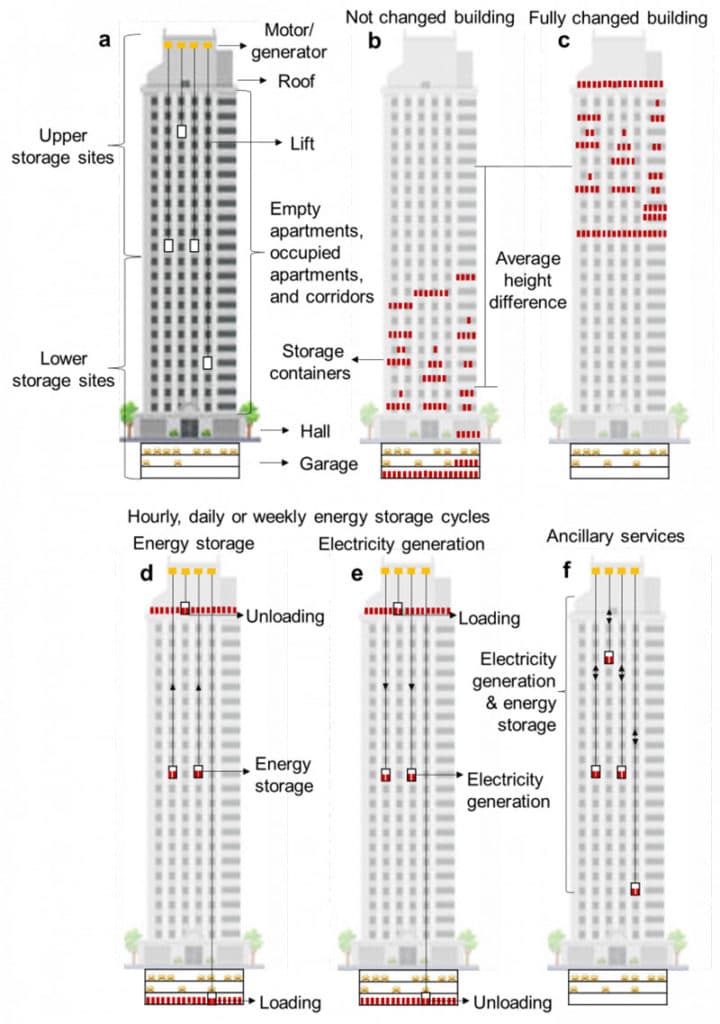The world is undergoing a rapid energy transformation dominated by growing capacities of renewable energy sources, such as wind and solar power. With the rapid reduction in the cost of renewable energy generation, there is a growing need for energy storage technologies to make sure that electricity supply and demand are balanced properly.
IIASA researchers have come up with a new energy storage concept that could turn high-rise buildings into batteries to improve power quality in urban settings. Called Lift Energy Storage Technology (LEST), the novel gravitational-based energy storage solution uses lifts and empty apartments in tall buildings to store energy.
It stores energy by lifting wet sand containers or other high-density materials, transported remotely in and out of the lift with autonomous trailer devices. The system would also make use of empty spaces on the top and bottom of the building.
LEST is an interesting option because lifts are already installed in high-rise buildings. This means there is no need for additional investment or space occupancy but rather using what is already there in a different way to create additional value for the power grid and the building owner. The power capacity is already installed in lifts with regenerative braking systems that can harvest energy as a lift descends, so they can effectively be looked at as pre-installed power generators.

An existing lift can be used to transport the containers from the lower apartments to the upper apartments to store energy and from the upper apartments to the lower apartments to generate electricity. The idea is that when the lifts are not being used to transport people, they can be used to store or generate electricity.
There are still a few details that need to be further refined before the system can be deployed. This includes finding room to store the weights the system relies on at the top of the building when the system is fully charged and at the bottom of the building when the system is discharged. Another consideration is the ceiling bearing capacity of existing buildings where the system is installed.
“Environmentally friendly and flexible storage technologies like LEST are set to become more and more valuable to society in a future where a large share of its electricity comes from renewables,” said concludes study co-author Behnam Zakeri, a researcher in the IIASA Integrated Assessment and Climate Change Research Group. “Therefore, policymakers and power system regulators need to adopt strategies to incentivize end-users, in this case, high-rise buildings, to share their distributed storage resources, such as LEST, with the central grid. The coordinated utilization of such distributed resources alleviates the need for investment in large-scale central storage systems.”
Being able to store energy where electricity is mostly consumed, such as in cities, will greatly benefit the energy grid. And researchers believe that LEST can provide affordable and decentralized ancillary services, which could, in turn, improve the power quality in an urban setting.
The LEST’s installed storage capacity cost is estimated at 21 to 128 USD/kWh, depending on the height of the building. The global potential for the technology is focused on large cities with high-rise buildings and is estimated to be around 30 to 300 GWh.
Turning high-rise buildings into gravity batteries
Source: Tambay News

0 Comments